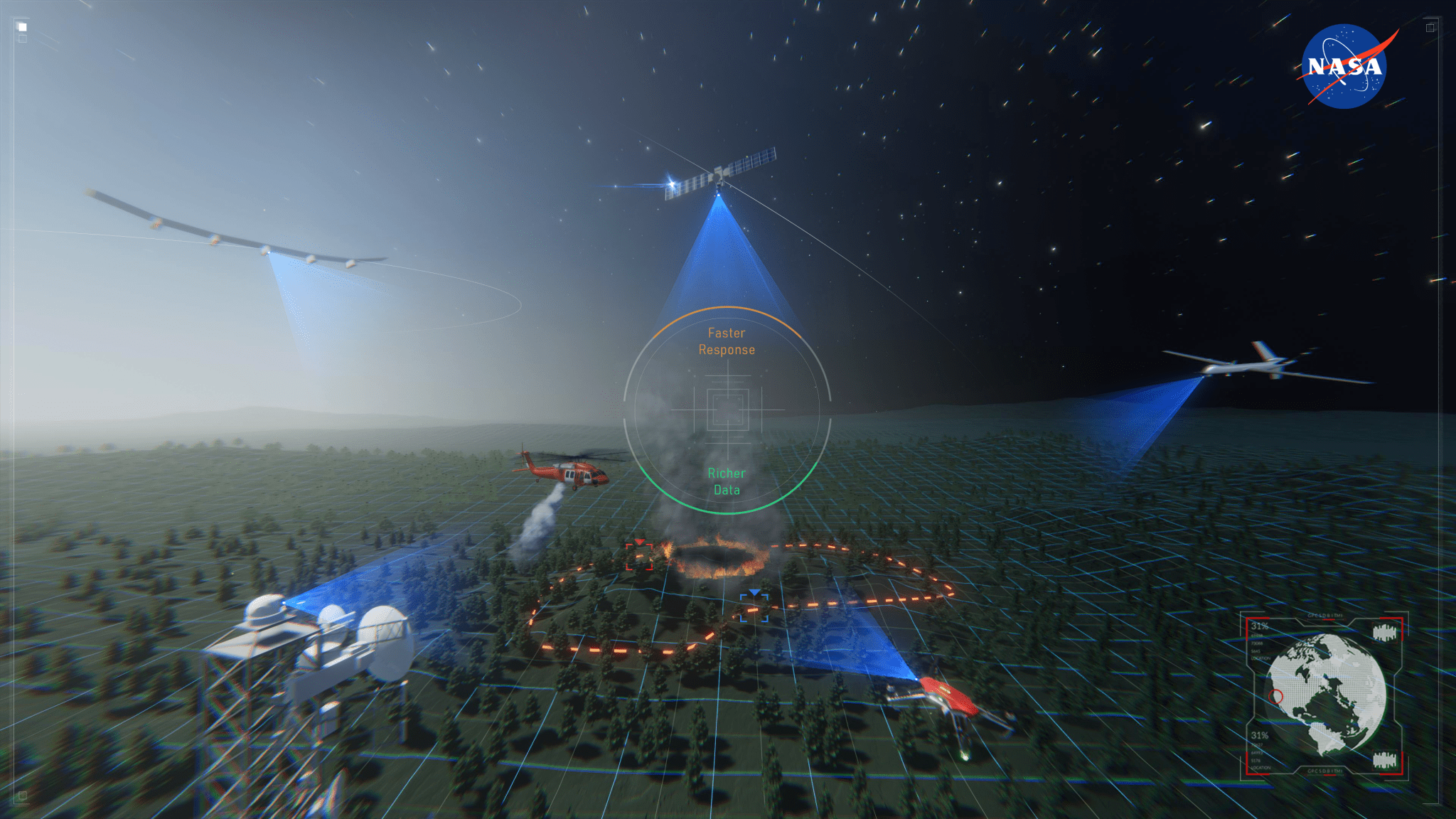
NASA and the Federal Aviation Administration (FAA) have established a research transition team to guide the development of wildland fire technology.
Wildland fires are occurring more frequently and at a larger scale than in past decades, according to the U.S. Forest Service. Emergency responders will need a broader set of technologies to prevent, monitor, and fight these growing fires more effectively. Under this Wildland Fire Airspace Operations research transition team, NASA and the FAA will develop concepts and test new technologies to improve airspace integration.
Current aerial firefighting operations are limited to times when aircraft have clear visibility – otherwise pilots run the risk of flying into terrain or colliding with other aircraft. Drones could overcome this limitation by enabling responders to remotely monitor and suppress these fires during nighttime and low visibility conditions, such as periods of heavy smoke. However, advanced airspace management technologies are needed to enable these uncrewed aircraft to stay safely separated and allow aircraft operators to maintain situational awareness during wildland fire management response operations.
Over the next four years, NASA’s Advanced Capabilities for Emergency Response Operations (ACERO ) project, in collaboration with the FAA, will work to develop new airspace access and traffic management concepts and technologies to support wildland fire operations. These advancements will help inform a concept of operations for the future of wildland fire management under development by NASA and other government agencies. The team will test and validate uncrewed aircraft technologies for use by commercial industry and government agencies, paving the way for integrating them into future wildland fire operations.
ACERO is led out of NASA’s Ames Research Center in Silicon Valley under the agency’s Aeronautics Research Mission Directorate.
Comments are closed.